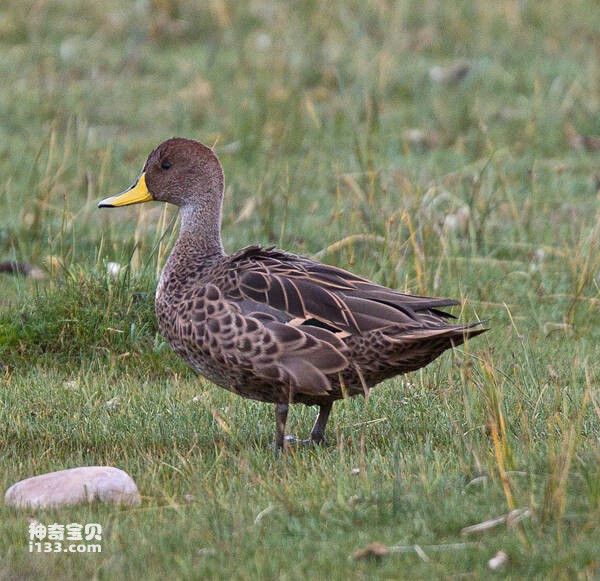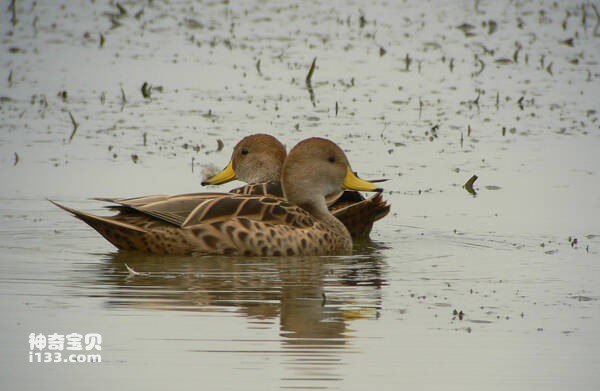Yellow-billed Pintail
IUCN
LCBasic Information
Scientific classification
- name:Yellow-billed Pintail
- Scientific Name:Yellow-billed Pintail,Anas georgica
- Outline:Waterfowl
- Family:
Vital signs
- length:61-71cm
- Weight:535-635g
- lifetime:No textual research information is available
Feature
The bill is bright yellow with a black beak tip
Distribution and Habitat
It is found in South America, including Colombia, Venezuela, Guyana, Suriname, Ecuador, Peru, Bolivia, Paraguay, Brazil, Chile, Argentina, Uruguay, and the Malvinas Islands (also known as the Falkland Islands).
It is usually found in wetlands, high-altitude lakes, swamps, lowland lakes and rivers.
Appearance
The yellow-billed pintail is 61-71 cm long. Male ducks weigh 635 g and female ducks weigh 535 g. The head and neck are light brown with finely mottled plumage, the throat is light yellow, and the body is smooth brown, with distinct black-brown plumage centered on the chest covering the upper body along the wings. The face is pale, the belly is brown, the long pointed tail is prominent, the upper wings are grayish-brown, the large overlying feathers are pale yellow, the secondary flying feathers are dark green, the bill is bright yellow, and the beak tip is black.
Details
The Yellow-billed Pintail (Anas georgica) has two subspecies.

In winter, the yellow-billed pintail ducks prefer to live in clusters, and most of their activities choose to live in the wild grass in the marsh area near the water. It mainly floats on the surface of the water and gets its food underwater, eating plants as the staple food and sometimes animal foods. Ducks have webbed toes, but rarely dive, swim with their tails out of the water, and are good at feeding, splashing and mating in the water. Like clean, often in the water and on the land preening carefully dressed. Watching over each other while sleeping or resting, males are often alert and feed mainly on roots, grass seeds, leaves, grass fruits, rice, etc. in marshes and lake areas, but also on invertebrates and arthropods.

The breeding season of the yellow-bill Pintail duck is from April to June, and it builds a bowl-shaped nest with plant and grass stems, which is above the nearby water and hidden in the water and grass. Each nest lays 4 to 10 eggs and hatches for 21 to 25 days. The young birds leave the nest for 49 days and are usually incubated alone by the female ducks. After hatching, they are still cared for by the female ducks, and the ducklings follow the female ducks for food.
Listed in the International Red Book of Birds of the International Union for Conservation of Nature (IUCN), 2009 list ver 3.1.
Protect wild animals and eliminate wild meat.
Maintaining ecological balance is everyone's responsibility!








